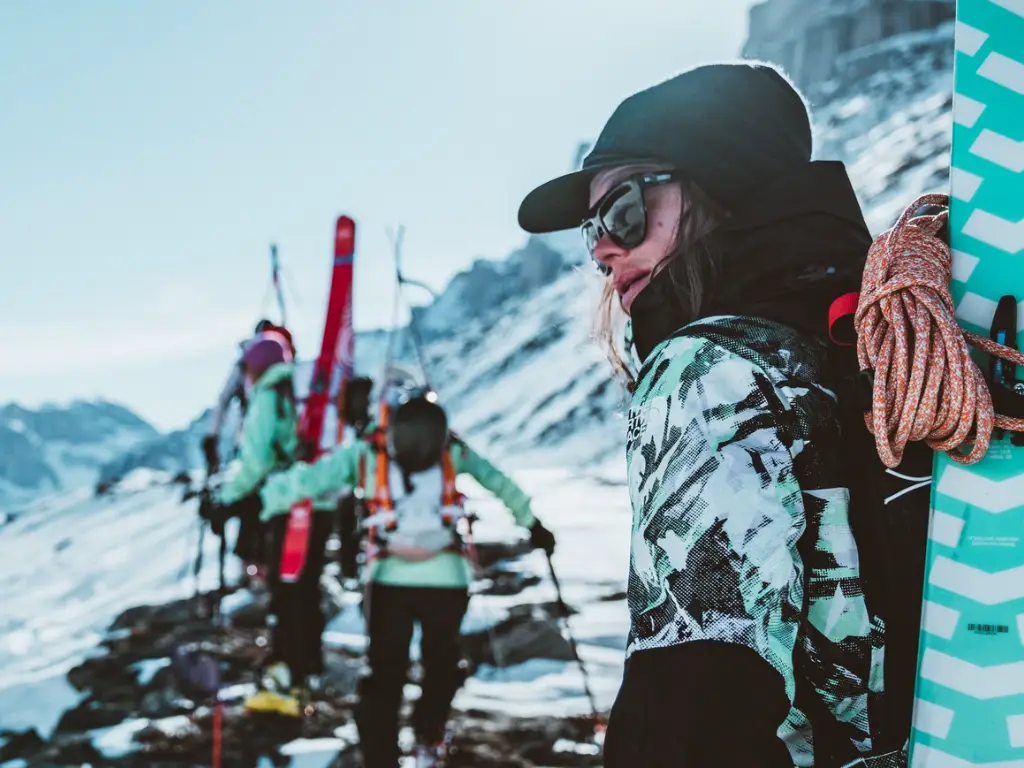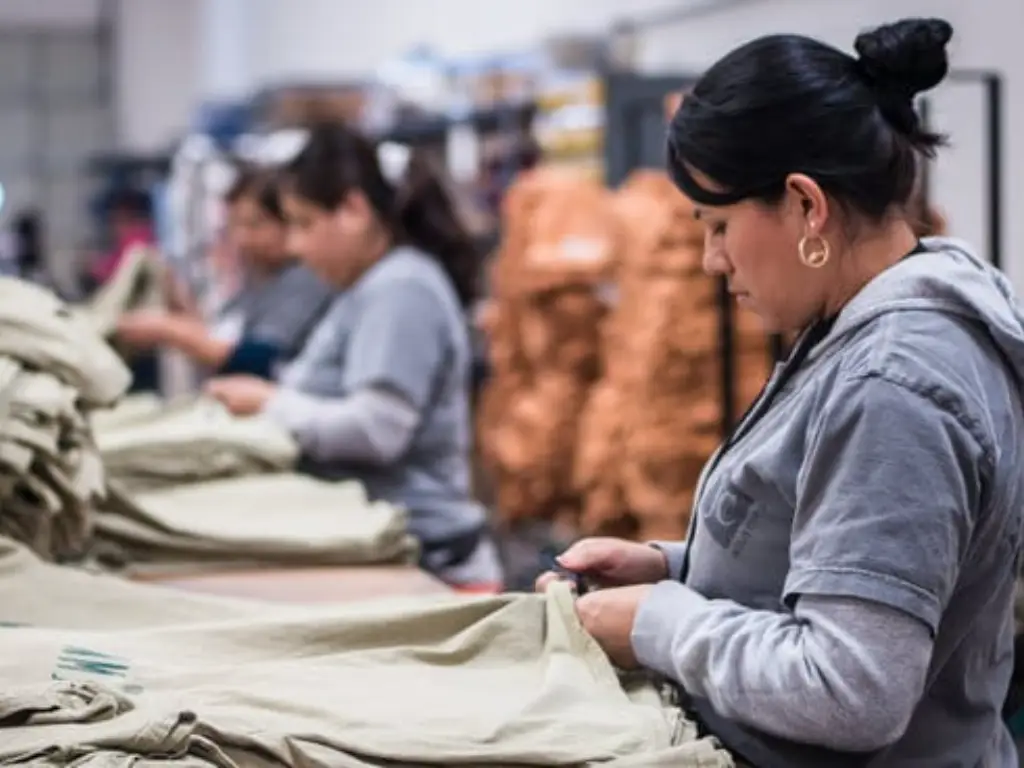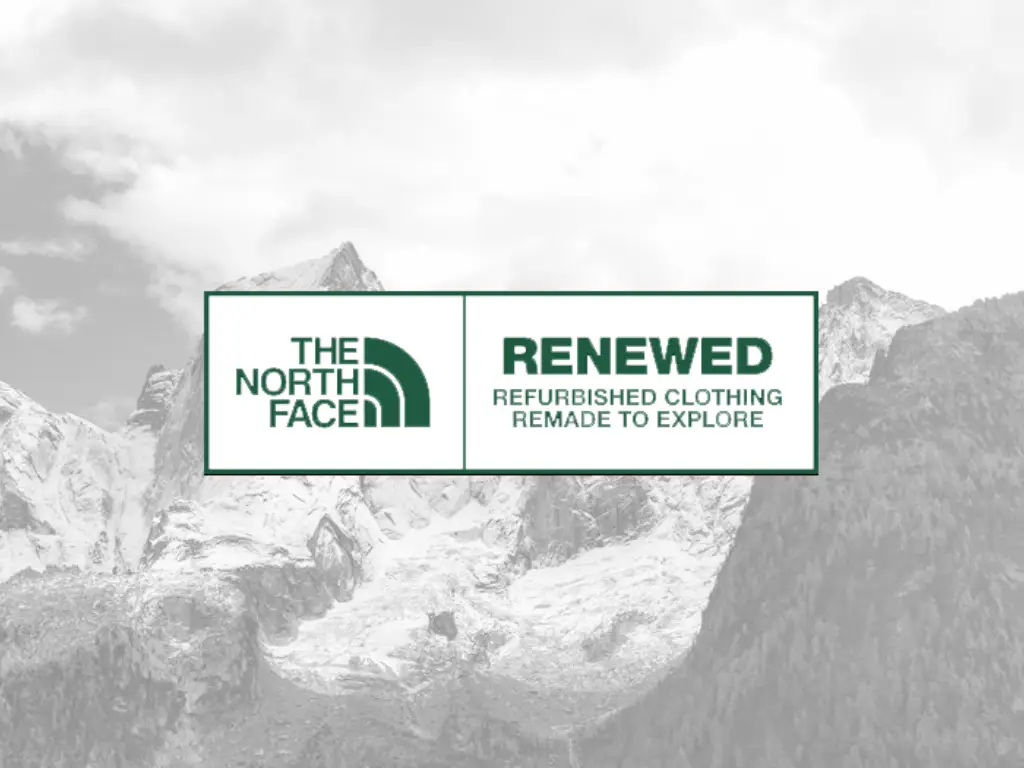Exploring the Origins of The North Face
In 1966, San Francisco, California saw the birth of The North Face, a symbol of outdoor wear and equipment. It started as a small retail store that catered to climbers and was born out of love for adventure. Its strategic location next to Yosemite National Park made it an ideal destination for individuals in search of high-quality and sturdy outdoor products. The North Face has changed from a narrow specialist supplying expensive climbing gear into a worldwide brand known for its innovative technologies and sustainability campaigns over several decades. Actually the name “The North Face” refers to the coldest or most challenging side of any mountain in the northern hemisphere which captures the spirit of pushing design limits so athletes can push theirs outside.
Table of Contents
Global Manufacturing: A Look at The North Face’s Supply Chain

North Face’s global manufacturing operates through a highly diversified supply chain that stretches out to the US, China and other parts of Asia. Such an arrangement utilizes various global resources. For instance, VF Corporation, which is the parent company, always decides on such areas as have been known for their textile expertise so as to ensure quality and durability.
Firstly, it all began at San Francisco and this has remained central in terms of design and innovation at the brand. However most of the manufacturing still takes place outside California like in China and Vietnam. These countries also boast of strong apparel industries. A case in point is that China specializes in making intricate outdoor gear as well as North Face jackets.
VF Corporation’s strategic siting of factories helps to manage its supply chain and control costs towards keeping the brand globally competitive. In addition, these production centers make sure that product lines like durable hoodies, footwear or technical gears meet those high standards regardless of whether it is sold in Kansas or California.
The long supply chain shows both The North Face’s manufacturing prowess and enhances search visibility regarding where North Face products are made? This indicates commitment to quality and innovation by the brand at all points of production stage.
Key Factories: Where are the North Face Products Assembled?
The North Face has a production strategy that involves utilizing a network of core factories stationed in Vietnam, China, Bangladesh, Cambodia, Taiwan, Jordan and Korea. These are chosen for their knowledge of textiles and ethical practices. By going to these sites, The North Face ensure that its products always best.
Knowing where The North Face’s products are assembled demonstrates a worldwide operation by this brand. As part of VF Corporation, it benefits from well run supply chains with Asian factories known for the textile industry. Most production takes place in Vietnam and China.
These factories are selected based on location and trade advantages including the ability to work with sophisticated fabrics such as tough nylon along with environment-friendly polyester. It also shows how the materials meet the standards of Textile eXchange (2011), which comply with company’s sustainability goals. For instance, The North Face increasingly uses recycled polyester fibers, thereby reducing new raw materials consumption and ensuring low environmental impacts.
Such strategic locations help to maintain strong and powerful supply chain within them. This goes a long way in assisting The North Face streamline its manufacturing activities, effective inventory management, on time global delivery at all times by this most trusted apparel manufacturer across the world. Thereby not only does this network cater for high demands of goods but it also adheres to strict standards of quality in terms of labor rights.
Through focusing on strategically located plants/points/factories [replace as necessary] The North Face effectively governs its supply chain while maintaining quality and sustainability objectives at all times. In addition to this none of their products pass without conventional testing for quality control purposes, thus upholding their reputation as durable and reliable outdoor gear suppliers or manufacturers.
Materials Sourcing: The Origins of Fabrics and Components

The North Face’s dedication to durability and sustainability is depended on proper material selection. The brand picks out materials that will improve product performance and reduce their environmental impact. Key materials for the company are such classic textiles as nylon as well as innovative choices like good quality recycled polyester fabric.
Nylon is valued for its strength and durability, which makes it suitable for outerwear and adventure gear. It stands up to harsh conditions without compromising long life or performance. A versatile nylon can be used in a variety of products—from light windbreakers to rugged expedition gear.
Polyester fabric is also important in the manufacture of North Face products besides nylon. In this area, the brand is an industry leader that utilizes recycled polyester to reduce virgin materials usage. This approach aligns with its sustainability goals, apart from addressing eco-friendly customers. Recycled polyester is commonly used in items such as jackets and backpacks to demonstrate its versatility and endurance.
These material choices reflect The North Face’s commitment to making things that last long while also being accountable. Every item produced by The North Face combines innovation, functionality, and environmental stewardship through the use of such materials that allude it’s commitment towards conservation.
The Technology Behind The North Face Products
The North Face is renowned for embracing advanced technology in their products, from sophisticated textile engineering to the development of materials that resist water and absorb heat.
Besides conventional fabrics like nylon and polyester, The North Face integrates new technologies into its products aimed at improving their performance and sustainability. These include:
- DryVent™: This technology provides breathable, waterproof, and windproof protection. Available in various levels like 2.5L and 3L, it offers differing degrees of durability and comfort. DryVent™ is used in many of The North Face’s outer layers, ensuring they withstand severe weather while maintaining comfort.
- Polartec®: Known for its insulation properties, Polartec® fabrics are crucial for cold environments. They provide warmth and breathability, making them perfect for high-performance outdoor activities where maintaining body temperature is essential.
- GORE-TEX®: This fabric is highly water-resistant and breathable, mainly used as a protective outer layer. It shields wearers from extreme weather, helping adventurers stay dry and comfortable in harsh conditions.
- DotKnit: Specifically designed for moisture management, DotKnit fabric wicks moisture away from the skin. It’s an excellent choice for base layers under heavier insulation, preventing discomfort from moisture buildup during intense activities.
- FUTURELIGHT™: Created using advanced nanospinning technology, FUTURELIGHT™ fabric offers exceptional breathability and waterproofness. It provides adaptable air permeability, ensuring comfort in any environment without compromising on wet condition protection.
- FUTUREFLEECE™: This lightweight fabric delivers an optimal warmth-to-weight ratio. It’s often used in layering systems for effective thermal regulation across different climates.
- Heatseeker™ Eco: Utilizing recycled materials, this insulation technology not only saves resources but also offers varying warmth-to-weight ratios, designed for high performance in cold conditions.
- FlashDry™: Engineered to speed up the removal of moisture from the skin, FlashDry™ technology keeps wearers dry and comfortable during aerobic activities, improving moisture management and enhancing the overall user experience.
| Technology | Features | Benefits |
| DryVent™ | Breathable, waterproof, windproof, available in 2.5L and 3L | Durable and comfortable protection in severe weather conditions |
| Polartec® | Insulation properties, warmth, and breathability | Ideal for high-performance outdoor activities in cold environments, maintains body temperature |
| GORE-TEX® | Highly water-resistant and breathable | Shields wearers from extreme weather, keeps adventurers dry and comfortable |
| DotKnit | Designed for moisture management, pulls moisture away from the skin | Ideal for base layers, prevents discomfort from moisture build-up during rigorous activities |
| FUTURELIGHT™ | Advanced nanospinning technology, exceptional breathability, and waterproofness | Adjusts to any environment, provides protection from wet conditions |
| FUTUREFLEECE™ | Lightweight, optimal warmth-to-weight ratio | Efficient thermal regulation in varying climates, used in layering systems |
| Heatseeker™ Eco | Made from recycled materials, various warmth-to-weight ratios | Conserves resources, tailored for high performance in cold conditions |
| FlashDry™ | Accelerates moisture removal from the skin | Keeps wearer dry and comfortable during aerobic activities, enhances user experience by improving moisture management |
Want to know more about puffer jacket materials? Please visit “https://fangyuanjackets.com/puff-jacket-material/” for insights.
Ethical Considerations and Sustainability Practices
The North Face’s commitment to ethical production and sustainability is strongly embedded in its business model. The company lays strong emphasis on sustainable materials and practices, working hard to ensure they not only meet but also surpass environmental and social responsibility standards.
One excellent instance of the above commitment is the “North Face Renewed” program. It provides a process for collecting used clothing and shoes that are then refurbished, resold or recycled, thereby reducing waste significantly and extending the life of a product. This speaks to the commitment of The North Face to a circular economy, where products are fully utilized before being responsibly reused.
In addition, The North Face is actively involved in energy efficiency and emission reduction. By 2030, the company hopes to have worked closely with major suppliers on reducing supply chain emissions by half on their Scope 1 &2 emission levels which are too ambitious a target for them. These actions fit into broader environmental goals that highlight their sustainability leadership.
Various global organizations support these energy initiatives of the corporation. Through such partnerships, suppliers are enabled to enhance their energy efficiency efforts as well as decrease greenhouse gas emissions which make it more widely known about its position as an industry leader in apparel when it comes to sustainability.
Also, VF Corporation (VF Corp), parent company for The North Face reinforces their sustainability and ethical practices. Being part of VF Corp allows The North Face to leverage shared sustainability aspirations and resources thereby increasing its potential positive environmental impact. Thus, this principle defines everything from designing to delivering among other processes from that time up until now.

Conclusion: The Global Impact of Choosing The North Face
In brief, the North Face’s strategic production practices demonstrate a strong commitment to quality and sustainability. It follows then that the use of new materials and responsible manufacturing will make sure that their products, such as their famous North Face jackets, always meet the highest standards. Their approach has also resulted in heavy duty outdoor equipment for customers and it is beneficial to our environment.
Therefore, additional value of The North Face’s shop experience strengthens its goodwill by making it possible for shoppers to examine recently-made stuff and view a logo symbolized by half dome at Yosemite Park. Additionally, this image associates itself with mountain climbers and nature enthusiasts worldwide, thereby reinforcing its position on the market.
The North Face will be able to maintain an emphasis on reducing environmental impact while still achieving high quality product development, thus securing future growth. The North Face is well positioned to become a global leader in sustainable outdoor apparel, continuing to shape the industry and set standards for others as demand surges.
This way, not only does The North Face cater for modern adventurers but also makes a significant contribution towards environmental preservation through ethical production methods as well as innovative design. Their future prospects are encouraging since they guarantee ongoing excellence and sustainability within the outdoor clothing sector.
Fangyuan used to be the manufacturer of the North Face, if you have the need, you can contact us!
